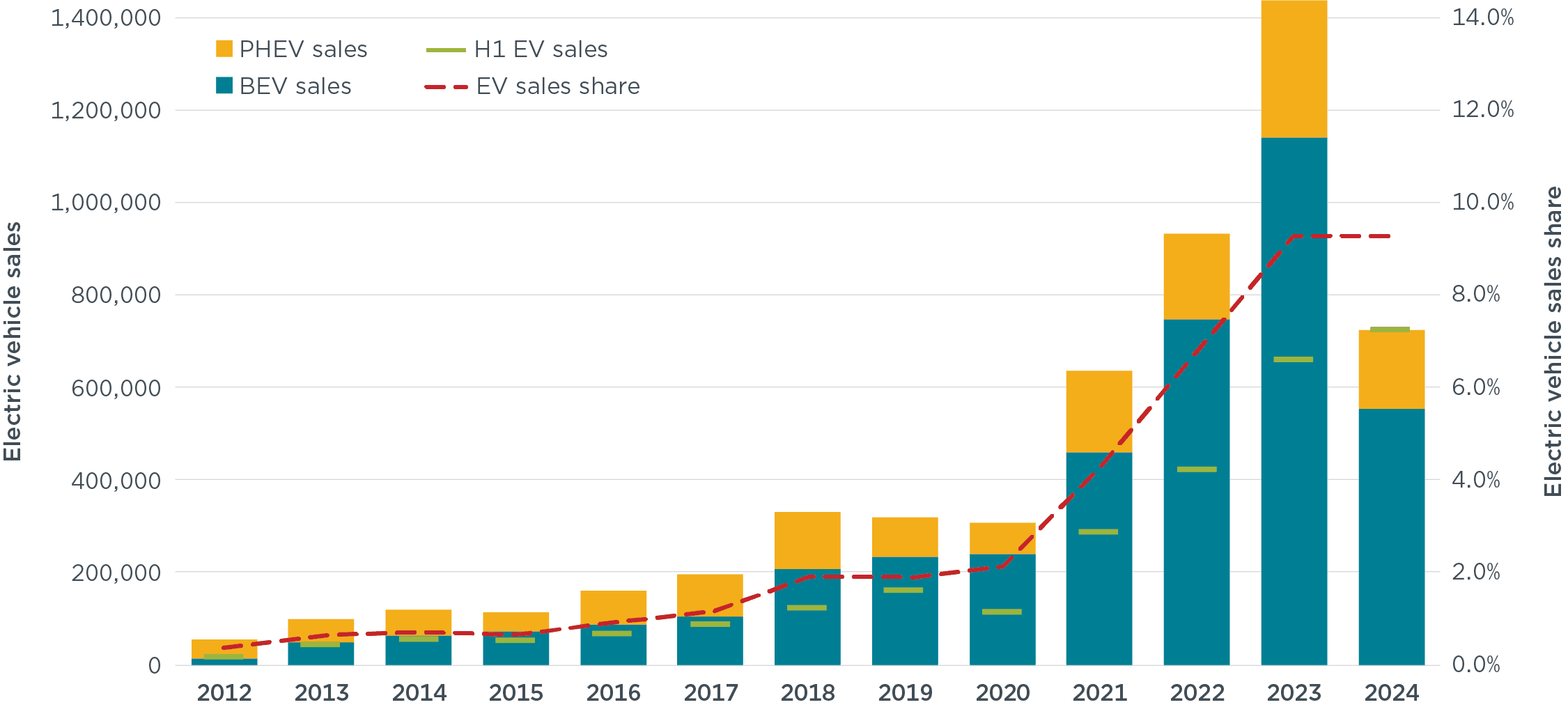Clearing the air: Emerging data and battery trends suggest EVs could bring lower fire risk
Blog
Clearing the air: Drivers are benefiting greatly from EV offerings
Greenhouse gas standards for new vehicles, which the U.S. Environmental Protection Agency (EPA) has promulgated since 2012, have led to hundreds of new combustion vehicle models with advanced efficiency technologies such as turbocharging, direct injection, micro-, mild-, and strong-hybridization, cylinder deactivation, and transmissions with seven or more gear ratios. EV model availability has also grown under the current standards, and coverage across vehicle types and price classes is improving. These and many more innovations have come with record-high fuel economy, power, and acceleration, and models covering the full range of price classes. Since 2012, these results were achieved with average new vehicle price increases below the Consumer Price Index.
Consumers are benefitting greatly from more efficient and zero-emission vehicle offerings. The Natural Resources Defense Council estimated that improvements in vehicle fuel economy over the last two decades saved consumers between $630 and $840 annually on gas. And EVs cost even less to drive and maintain. According to new research by Atlas Public Policy and the Natural Resources Defense Council, the cost today to own and operate an EV is always cheaper than a comparable gas car, with savings on the high end of up to $7,000–$11,000.
We expect the same kinds of benefits from EPA’s newly finalized standards. These will reduce greenhouse gas emissions from new vehicles beyond all previous regulations. Declining EV and battery costs mean that it makes business sense for automakers to offer more models and for more consumers to buy them. EPA’s most likely compliance scenario estimates that automakers will respond to the standards by offering consumers a much broader selection of car, SUV, and pickup truck EVs at a variety of price points. With anticipated falling EV and battery costs, over $1 trillion in announced automaker EV investments, and off-the-lot savings for consumers purchasing an EV, many more EV models can be expected. As a result, the pool of EV models that is already twenty times what it was over a decade ago is sure to grow. Many automakers are committed to an all-electric future and have announced many dozens of new models.
All of this improves consumer welfare. EVs cost less to operate than combustion models. EVs can be more convenient, as consumers can recharge at home or at work without needing to visit a gas station or use a fast charger. EVs also reduce noise and air pollution. Without EPA’s standards, it’s likely that the availability of EV models would be comparatively lacking, and their benefits would be less accessible to drivers. Because of EPA’s standards, we can expect increased consumer savings, cleaner air, and a lot more electric and advanced combustion engine vehicle model options.
Author

Aaron Isenstadt
Independent Consultant

